News
India's lack of firepower in middle-order and pace department
 OPINION
OPINIONHere are some of the major takeaways for India from the T20I series defeat against England
India opener Smriti Mandhana showed her class in the third and final T20I before Danielle Wyatt flexed her muscles in the second innings and propelled England to a resounding series win. The Women in Blue were denied a chance to level the multi-format series after both sides took two points each from the drawn Test in Bristol before the hosts claimed both the ODI and T20I series 2-1 to win 10-6 overall.
India did well in patches but Heather Knight and Co. were formidable. The visitors were competitive in the one-off Test but there weren't too many positives to emerge from the white-ball leg. In the T20I series, Mandhana was the only batter who was consistent, while the bowlers failed to put enough pressure on the England batting unit. Here are some of the major takeaways for India from the T20I series.
LACK OF DEPTH IN PACE DEPARTMENT
Jhulan Goswami, Pooja Vastrakar, Shikha Pandey and Arundhati Reddy - India used only four seamers across formats in England. And, the latter two were the only ones who featured in the T20I series. Pandey took three wickets at an economy of 7.3, while Reddy leaked runs at 9.6 and could only pick up one wicket in three encounters. Head coach Ramesh Powar later was pretty vocal about widening India's fast-bowling pool.
"In the fast-bowling department, only Jhulan (Goswami) performed. There has to be some support for her, so we are looking to enhance the fast-bowlers department. If we are going to get a camp after this tour, we will start working on them. In the next seven months (leading into the World Cup]), we want to create a pool of fast bowlers. We already have five in the team, we are looking at five more, so 10 bowlers to work on for the next few months and we will get the results," Powar said.
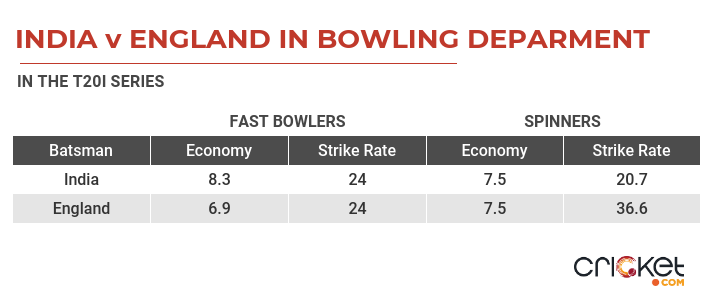
If you look at the numbers, England were superior in both pace and spin departments. The likes of Katherine Brunt, Natalie Sciver and Freya Davies were far more economical than the Indian seamers, while Sophie Ecclestone, Sarah Glenn and Mady Villiers were not just economical but ended the series with a way better average (26 v 46.3) and strike rate than their Indian counterparts. Overall, amongst the top 10 T20I teams who have played at least 10 matches in the format since 2020, Indian pacers have the worst economy, average and strike rate.
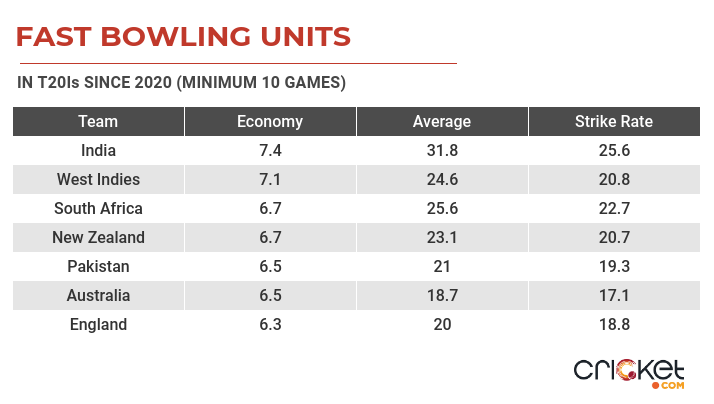
LACK OF BIG SCORES
"We will play fearless cricket, that is what we will do. They have been playing with some ideology for the last two or three years, I have to assess what suits them. To get them out of it, I need to convince them. In the third T20I, we were 28 for 2 after six overs but ended up with 153. We discussed that we would play fearless cricket no matter what. In T20s, we need 160-plus to put pressure on other teams. If you don't, every team will dominate you," said Powar.
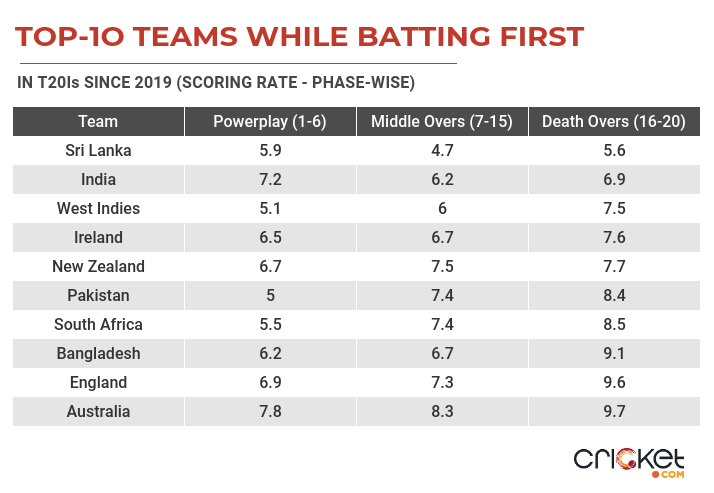
Openers Smriti Mandhana and Shafali Verma are two of the best white-ball batters in world cricket, but apart from these two, not a single Indian batter has a strike rate of more than 115 in T20Is since 2019. Shafali and Mandhana operate at 145.2 and 131.1 respectively, while the next best is Richa Ghosh (112.5). Then you have the likes of Harmanpreet Kaur (100), Jemimah Rodrigues (98.8), Sneh Rana (92.3), Deepti Sharma (89.5) and Harleen Deol (84.7) in the middle-order and it's largely because of them India have the fifth-worst and second-worst scoring rate in the middle overs (7-15) and death overs (16-20) respectively in T20Is since 2019.
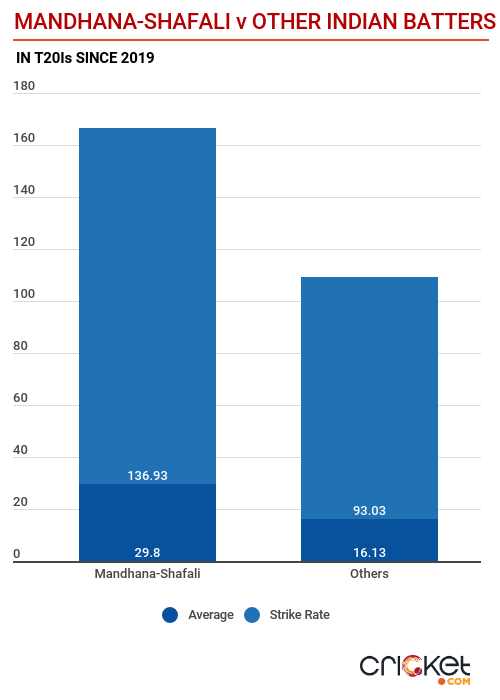
Harmanpreet did find some form in the last two T20Is but India have heavily relied on Mandhana and Shafali in the last 2-3 years. Ghosh has played a couple of good cameos but India can't allow batters like Deepti and Deol to operate at a strike rate of less than 90. Since 2019, India have managed to breach the 150-run mark only thrice in 16 innings while batting first. Meanwhile, Australia have done it eight times in 14 innings and England have done it 14 times in 21 innings. If India want to compete with the top teams, their middle-order will have to step up big time.
THE MANDHANA-SHAFALI COMBO
The two openers fired together only once in the series and India won that match. The duo put on 70 runs in 8.5 overs in the second T20I in Hove and the Women in Blue went on to win that game by eight runs. Mandhana looked good in all three innings, scoring 29, 20 and 70. In T20Is against England, she has scored 436 runs in 13 innings at an average of 36.3 with a staggering strike rate of 140.6. No other batter who has faced 10+ innings against England has a better strike rate than the left-hander.
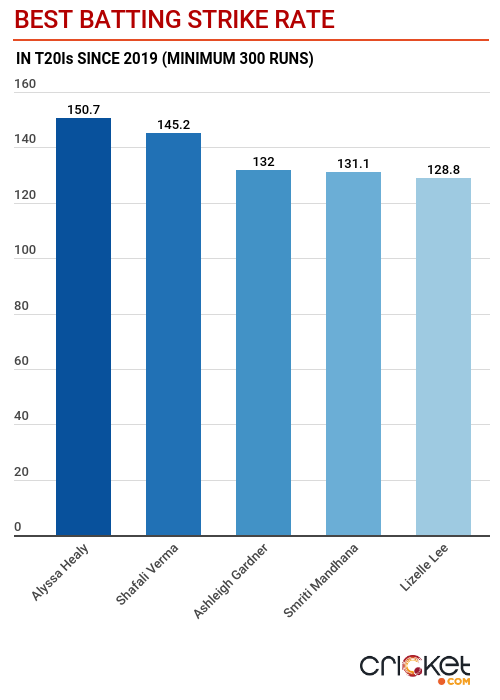
Meanwhile, Shafali did smash 48 in the second T20I but was dismissed for a duck in the other two encounters. Shafali is only 17 but is already one of the most feared batters in world cricket. Considering India don't have a great middle-order, Shafali will now have to start converting those 30s and 40s into 70s and 80s. And, this is only because of the middle-order not doing their job.
The fearsome opener is solid against both pace and spin but will have to work a bit on her back-foot game. Shafali has a strike rate of close to 160 while charging down the track and on the front foot but it drops to 112.3 while playing on the back foot. Her average too drops from 29.7 and 19.8. This is the area Brunt exploited in the T20I series.
(All stats till July 14, 2021)